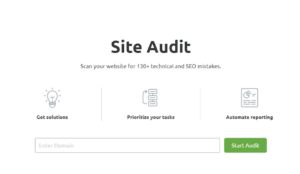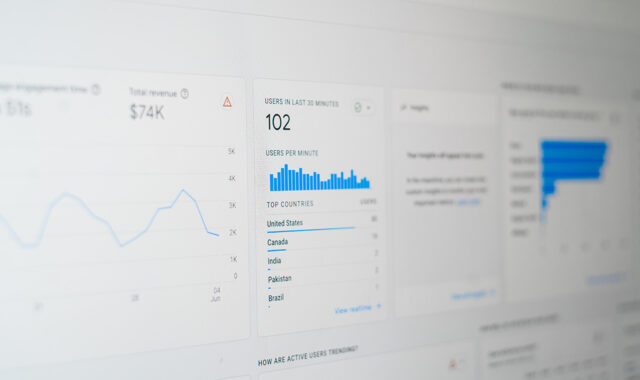If you’re still unsure about where to start, we can help.
With our free tips and guidance, you can build a better digital marketing setup. But if you don’t have the time or resources to manage it all on your own, we can support you. Get in touch to find out how.
You’ve probably heard about website auditing, but do you know what it means? Website auditing involves thoroughly analysing your website for technical, on-page, off-page, and local SEO performance data.
As you run your online business, it’s essential to carry out website auditing periodically. This will guarantee you get the best results from your campaigns and help you achieve organic growth.
Below are some helpful steps to keep in mind.

1. Choose your SEO tool
Many SEO tools promise various SEO functionalities. However, to make things easier for you, check for top brands that provide analysis on all four SEO categories.
Here are our recommendations:
- Google Search Console
- Semrush
- Ahref
- Screaming Frog
2. Run your audit
Depending on the software you choose, the steps you take to run your site audit might vary from tool to tool. However, the same basic principles apply across most. Here is an example of how, based on running an audit with sandbox.com.
i. Copy and paste your domain address into the search box.

ii. Click Analyse/Start audit/search.
iii. After the site crawling and analysis are complete, a report will be generated.


Support Services
Explore our services to see how we can support you.
We work with clients of all sizes, ambitions, and expectations, and with budgets that start from as little as £150pm to over £1.5m each year. Explore our simple-to-understand packages that take the pressure off, so that you can focus on what you do best.
3. Check for technical issues
Once you’ve got your report, the first area you want to focus on is your technical issues. These issues can affect the smooth operation of your site and SEO. They include:
- HTTPS implementation.
- Crawlability.
- Mobile and desktop page speed.
- Robots.txt file.
- Broken links.
- XML sitemap.
- AMP links.
4. Check for SEO issues
Now, check the elements on your report that directly impact your SEO and see what you need to do. They may include:
- Meta tags.
- Meta descriptions.
- Duplicate pages, title tags and meta descriptions.
- Indexed low word count pages.
- Missing images or image alt texts.
- Internal links.
- Content canonicalisation.
- Lack of proper H1, H2, H3 headings.
- Hreflang usage.
- Google analytics codes.
- Keyword cannibalisation.
You might want to pay for auditing tools that have a paid premium solution before conducting your site audit to ensure you get a full report on all these significant areas.
5. Consider your UI UX design experience
With most SEO tools, you’ll get to know what design works best for your website; whether your website is mobile-friendly enough, and what you should do to improve it.
These tools usually include page depth and site navigation, revealing deeper insights into how people interact with your page. Some include a heatmap that will show what page design made the best impression.
6. Create your problem reports
Depending on your business size and website SEO compliance, you might have a lot of fixes to make.
Creating an XLSX document (spreadsheet), detailing the issues and recommended fixes, will ensure you correct them.
It also makes it easier for you to assign tasks to help resolve the issues to your various teams.
You can choose to create a new document or click on the export button on your site audit, then manually edit it to fit your priority list.
You might need an SEO specialist to assist you in interpreting this data and conducting a deeper analysis. But the initial steps above are a good start and will help you decide if you need further action.

Get a free website health-check.
Find out if your website is depriving you of visitors. Request our free website health-check to identify common issues with speed, user experience, and performance. We’ll deliver this in a clear report along with some basic recommendations and quick fixes.
Learn more about health-checks
Frequently asked questions
-
With all the responsibilities you and your team shoulder, it’s unrealistic and impossible to try to track your site’s SEO performance manually. Here are some of the bests on the market to meet your needs.
-
There are free online tools you can use to help you create a better browsing experience for your visitors. Here are some that can be incredibly helpful for your content design needs.
-
There are strategies that search engines like Google frown upon. Using them can only hurt your SEO and business success. Here are some of the most common.
Start a Conversation
Request a call-back to see how we can support your digital growth.













